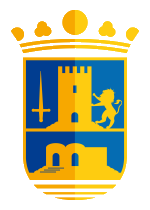- Region
- Águilas
- Alhama de Murcia
- Jumilla
- Lorca
- Los Alcázares
- Mazarrón
- San Javier
-
ALL AREAS & TOWNS
- AREAS
- SOUTH WEST
- MAR MENOR
- MURCIA CITY & CENTRAL
- NORTH & NORTH WEST
- TOWNS
- Abanilla
- Abarán
- Aguilas
- Alamillo
- Alcantarilla
- Aledo
- Alhama de Murcia
- Archena
- Balsicas
- Blanca
- Bolnuevo
- Bullas
- Cañadas del Romero
- Cabo de Palos
- Calasparra
- Camping Bolnuevo
- Campo De Ricote
- Camposol
- Canada De La Lena
- Caravaca de la Cruz
- Cartagena
- Cehegin
- Ceuti
- Cieza
- Condado de Alhama
- Corvera
- Costa Cálida
- Cuevas De Almanzora
- Cuevas de Reyllo
- El Carmoli
- El Mojon
- El Molino (Puerto Lumbreras)
- El Pareton / Cantareros
- El Raso
- El Valle Golf Resort
- Fortuna
- Fuente Alamo
- Hacienda del Alamo Golf Resort
- Hacienda Riquelme Golf Resort
- Isla Plana
- Islas Menores & Mar de Cristal
- Jumilla
- La Azohia
- La Charca
- La Manga Club
- La Manga del Mar Menor
- La Pinilla
- La Puebla
- La Torre
- La Torre Golf Resort
- La Unión
- Las Palas
- Las Ramblas
- Las Ramblas Golf
- Las Torres de Cotillas
- Leiva
- Librilla
- Lo Pagan
- Lo Santiago
- Lorca
- Lorquí
- Los Alcázares
- Los Balcones
- Los Belones
- Los Canovas
- Los Nietos
- Los Perez (Tallante)
- Los Urrutias
- Los Ventorrillos
- Mar De Cristal
- Mar Menor
- Mar Menor Golf Resort
- Mazarrón
- Mazarrón Country Club
- Molina de Segura
- Moratalla
- Mula
- Murcia City
- Murcia Property
- Pareton
- Peraleja Golf Resort
- Perin
- Pilar de la Horadada
- Pinar de Campoverde
- Pinoso
- Playa Honda
- Playa Honda / Playa Paraíso
- Pliego
- Portmán
- Pozo Estrecho
- Puerto de Mazarrón
- Puerto Lumbreras
- Puntas De Calnegre
- Region of Murcia
- Ricote
- Roda Golf Resort
- Roldan
- Roldan and Lo Ferro
- San Javier
- San Pedro del Pinatar
- Santiago de la Ribera
- Sierra Espuña
- Sucina
- Tallante
- Terrazas de la Torre Golf Resort
- Torre Pacheco
- Totana
- What's On Weekly Bulletin
- Yecla


- EDITIONS:
 Spanish News Today
Spanish News Today
 Alicante Today
Alicante Today
 Andalucia Today
Andalucia Today
article_detail
Outlying districts of Alhama de Murcia: La Costera
Orange and lemon groves below the mountains of Sierra de Carrascoy
La Costera is one of three outlying districts in the north-east of the municipality of Alhama de Murcia which are clustered along the foothills of the Sierra de Carrascoy, the other two being El Cañarico and Las Cañadas.
There is a small church and a visiting priest in La Costera, but these days most of his duties are in Los Ventorrillos. Local fiestas are still held on a small scale in honour of San Pedro Apóstol in the month of June, and many of the residents also attend the fiestas of El Cañarico, where the feast day of San Antonio is celebrated in June along with the Fiestas de Parques y Jardines in August. These are also small-scale celebrations, with music and local cuisine, as well as a procession.

History
The history of the three districts of El Cañarico, Las Cañadas and La Costera begins with evidence of early Argaric and Iberian settlements, which date from anywhere between 1800 BC to the arrival of the Romans in 209BC, occupying the strategic outcrops above the fertile plains stretching out below.
Having taken Cartagena, the Romans moved in across what is now the Region of Murcia, with several archaeological sites in this valley showing evidence of agricultural villas which were dedicated to farming crops to feed the city of Cartagena and for export across the vast Roman Empire from the port.
La Costera has two Roman villa sites of note, Casa de las Viñas and Casa de Martín Rodríguez. Both of these were residential and agricultural establishments, run as estates from which crops could be transported to the city of Cartagena and beyond, with the ships from the port sailing to all over the Roman Empire.
The next culture of note in the area were the Moors, who farmed here from the 8th to the 13th centuries before being ousted by Christian settlers after the Reconquista. Belonging to this period, El Cañarico contains the remains of the Castillo de La Pita and the Torre del Cañarico: not much remains of these two buildings, but they are an important reminder of the necessity for fortified defensive towers under Moorish rule. They are hilltop fortifications dating from the 12th or 13th century, important not only to offer protection to the farmers living and working in the area, but also to exert control over the farmers and ensure that they paid their taxes.
After the area of Alhama was recovered from the Moors in the 13th century by the Crown of Castilla, the town was included in the administrative area of the Guadalentín valley, which required protection against the Moorish incursions from the neighbouring kingdom of Granada. This insecurity explains the proliferation of defensive towers throughout the landscape, forming a line of defence in conjunction with the towers in Librilla and Alhama.
Another archaeological site is located at Los Palacios, where the medieval remains suggest the possible existence of a Moorish palace in the area, dating from the time before the Christian Reconquist in 1243.

Throughout the 13th and 14th centuries Alhama and El Cañarico changed hands between the Crowns of Castilla and Aragón, until on 25th November 1387, by decree of Juan I, they became the property of Alonso Yáñez Fajardo in recognition of his services to the crown of Castile. This was the beginning of a long period of rule by the Fajardo family (later the Marquises de los Vélez), many of whose internal disputes would affect the town.
The Torre de la Comarza and the Torre de Ínchola are archaeological remains from the MIddle Ages, the latter being an interesting fortification on the slopes of the Sierra de Carrascoy which has been partially rebuilt from the original remains. Opposite it is the tower of Alhama, and the tower of Librilla can also be seen from the site, the three being part of the network of defensive fortifications against possible enemy raids.
It was not until the 19th century that Alhama was finally freed from the taxes imposed by the Fajardo family and was able to develop further, especially in the centre of the town itself. The status of "Villa de Realengo" was not re-acquired by the town until 1834, and after this the outlying areas such as El Cañarico were at last affected by the agricultural revolution and the introduction of new crops.
In La Costera, though, after the turbulence of the Middle Ages the area was largely depopulated, its few residents dedicated to farming, and there is little trace of a population centre until the mid-18th century. The census of 1757 mentions the house of La Capellanía, which is in La Costera, but it was not until the latter part of the century that the first small centres of population began to become established, most of them clustering around the larger farms which can still be seen in the area. The population survey of 1777 was the first to refer to residents in Comarza and Ínchola, as the freeing of land from encumbrance made it easier for individuals to become landowners.
At this time La Costera became the property of the Mariano Girada, a member of parliament, but many years later this type of landowning monopoly was abolished and it became possible for other locals to buy land.

The nearby village of Los Ventorrillos was founded in 1887, and by the middle of the twentieth century La Costera was home to more than 500 people. However, the lack of local infrastructures led to considerable emigration in the following decades, and the population fell in rural areas throughout Murcia.
Traditionally, the economy of La Costera has always been based on agriculture and cattle farming. Nowadays most of the land is occupied by citrus fruit orchards, a large proportion of the produce being exported abroad, while industry is limited to a few pig farms, animal feed manufacturers and businesses concerned with the preparation and packaging of the fruit grown locally. There are also a number of livestock and equine related businesses.
Property in El Cañarico, La Costera and Las Cañadas
This area is intensely agricultural, mainly dedicated to producing citrus crops, so most properties are in the countryside and the population centres are very small.
There is little in the way of ex-pat support in these rural areas, and these three "pedanías" are on the fringes of the municipality of Alhama, almost as close to the shopping malls of Murcia as to Alhama! But for real, rural spain, within a sensible distance of expat communities, the coast and the cities of Murcia, Lorca and Cartagena, outlying districts of Alhama are an interesting option.
For more local information in English relating to the municipality of Alhama de Murcia, including news, static information and forthcoming events, visit Alhama Today.
article_detail
Contact Murcia Today: Editorial 000 000 000 /
Office 000 000 000














